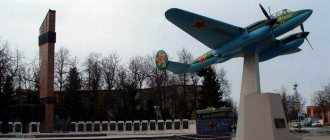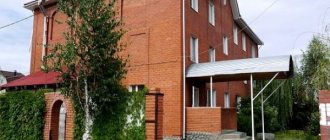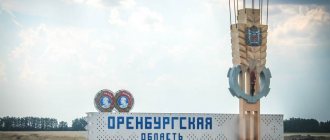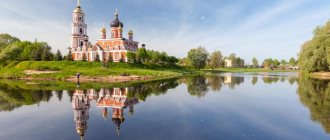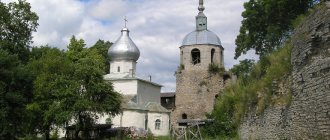Russia Akhtubinsk–>
| Coat of arms of Akhtubinsk | |
| A country | Russia |
| Subject of the federation | Astrakhan region |
| Urban district | Akhtubinsk |
| Based | 1959 |
| Timezone | UTC+4 |
| Chapter | Naruzbaev Amanga Alinkaleevich |
| Postcode | 416500 |
| City with | 1959 |
| Square | 17 km² |
| Telephone code | +7 85141 |
| Ethnobury | Akhtubintsy, Akhtubinka, Akhtubinets |
| Population | ▼ 42,128[1] people (2010) |
| Former names | Vladimirovka |
| Official site | https://www.adm-akhtubinsk.ru/ |
| OKATO code | 12 402 |
| Coordinates | Coordinates: 48°17′00″ N. w. 46°10′00″ E. d. / 48.283333° n. w. 46.166667° E. d. (G) (O) (I)48°17′00″ n. w. 46°10′00″ E. d. / 48.283333° n. w. 46.166667° E. d. (G) (O) (I) |
| Vehicle code | 30 |
| National composition | Russians, Kazakhs, etc. |
| Postal codes | 416500 – 416507 |
Akhtubinsk is a city in the Astrakhan region of Russia, the administrative center of the Akhtubinsky district. Located in the northern part of the region on the left bank of the Akhtuba River (a branch of the Volga), 292 km north of Astrakhan.
The city-forming enterprise is the State Flight Test Center named after. V. P. Chkalova. The administration of the municipal formation "City of Akhtubinsk" and GLITs are taking active steps to assign the city the status of a science city of the Russian Federation.
About the history of the city
The city of Akhtubinsk was formed in 1959, uniting the settlement of Vladimirovka with the neighboring villages of Petropavlovka and Akhtuba, as well as with a new military town for pilots and military training ground employees.
Sloboda Vladimirovka traces its history back to 1768. In addition to agriculture and cattle breeding, an important occupation of its inhabitants was the transportation of salt from Lake Baskunchak. River ships approached the Mamai pier on the Akhtuba River, loaded with salt and went out to the Volga along the channels. And then they went somewhere: down the Volga - to Astrakhan, to fisheries, or up - to Tsaritsyn, Saratov and other Volga cities. Salt is needed everywhere and always.
The village of Petropavlovka dates back to 1867. It arose near the same pier for loading salt, which was located about 3 km southwest of the Vladimirovka settlement. Those who worked on this pier settled immediately. At the beginning of the 20th century, the Church of Peter and Paul was built in the village near the pier, from which it began to be called that in 1910. Vladimirovka, by the way, also received its name from its temple of the Vladimir Icon of the Mother of God.
Vladimirovka. Vintage photo.
Since 1883, salt was no longer transported on carts, but by rail: a special branch line was laid from Lake Baskunchak to the Mamai pier. The Akhtuba railway station was put into operation, where a depot was built for the maintenance and repair of steam locomotives and carriages. In 1910, ship repair workshops opened in Petropavlovka, which became the basis of the future ship repair plant. In 1912, the railway bridge across Akhtuba was commissioned.
In 1920-1930, processing plants were built in Vladimirovka: a canning plant, a butter factory, a meat processing plant, as well as new clubs, schools, and workshops.
In 1947, the Chkalov Air Force Research Institute, a large aviation testing complex, was located on the territory adjacent to Vladimirovka. From that time on, a new history of these places began, the result of which was the founding of the city of Akhtubinsk in 1959.
In subsequent years, there was a systematic development of the ship repair and construction plant, processing industry, and railway transport; active construction of housing stock, social, cultural and medical institutions was launched.
The population of Akhtubinsk in 1987 reached 53 thousand people, but then began to decline steadily.
A little historical background
Akhtubinsk is the center of the Akhtubinsky district of the Astrakhan region, located in the north of the region, on the left banks of the tributaries of the Volga - Akhtuba, Vladimirovka and Kalmynka. The city's history begins with the unification of the villages of Vladimirovka (Vladimirovskaya Sloboda), Petropavlovka and Akhtuba.
Residents of Vladimirovka were engaged in growing bread and raising livestock. The settlers assigned to the salt trade became serfs, and a rent of grain and salt was taken from them. Salt warehouses were built at the Mana pier, where salt was delivered from Lake Baskunchak.
The history of Petropavlovka dates back to 1867, when 3 kilometers southwest of the Vladimirovka settlement on the left bank of the Volga, in a backwater where the Akhtuba River flows, the Vladimirovka pier was founded for loading salt onto river ships. In 1910, in Petropavlovka, the Okean joint-stock company organized a ship repair point, which over time grew into a ship repair yard.
The city-forming institution is the State Flight Test Center named after V.P. Chkalov.
State Flight Test Center named after Chkalov
GLITs is the main institution of the Russian Air Force and Armed Forces, in which all samples of military aircraft and their weapons undergo comprehensive testing before being put into service. Not a single type of aircraft, helicopter or airborne weapon enters service without testing at GLITs. After 1991, with the expansion of trade in Russian combat aircraft in the markets of developing countries, the center tests all export modifications of aircraft and helicopters developed under contracts with foreign customers.
Places for walking and cultural recreation
Since the time of the settlement of Vladimirovka, many ancient buildings have been preserved in Akhtubinsk. The most interesting architectural monuments of the 19th-20th centuries are the former merchant houses.
In particular, the houses of the family of the wealthy fishing merchant Lopatin, one of the local bigwigs. Since he himself came from simple peasants, the merchant helped the poor and was highly respected. That's why no one touched him after the revolution. However, the Soviet government took the house from the fishing merchant, placing various of its bureaucratic institutions in it.
House of Officers in Akhtubinsk
A large family of Yevtushenko merchants also lived in Vladimirovka. One of the houses of this merchant family, built in 1907, still houses the Akhtubinsky Regional Museum of History and Local Lore.
In a brick building on the street. Lenina, 90, built around 1900, lived the Starikov family. On the ground floor they had a bakery, and on the second they rented out rooms. During the years of Soviet power, this house housed the headquarters for dispossession of kulaks, the police, a clinic, the district education department, the department of irrigation systems, a workshop for repairing household appliances and other organizations.
City Park of Culture and Leisure named after Chkalov
This is one of the best places for walks and family recreation for citizens and guests of the city. All conditions have been created for him here: modern children's playgrounds, green areas, alleys and flower beds. There is a monument to Valery Chkalov in the park, and there are various decorative sculptures. There is also an original stage in the shape of an open shell - for performances at city events and folk festivals.
City Park of Culture and Leisure named after Chkalov
Location: st. Vasily Ivanov.
Reserve "Bogdinsko-Baskunchaksky"
Where Akhtubinsk is located, there is a unique protected area (in the Melioratorov microdistrict). On its territory there are amazing natural objects: caves, karst sinkholes, a salt lake. Baskunchak. Here you can find the rarest species of plants and 22 species of birds included in the Red Book of Russia.
The purest air of the reserve contains phytoncides and bromine. There are also healing muds on the shore of the lake. Their composition is similar to the mud of the Dead Sea. Many tourists come to these places every year to spend time relaxing on the picturesque banks of Akhtuba and Volga.
Fountain "Star of Victory" on Lenin Square
The picturesque “Star of Victory” fountain, which has the appropriate shape, was opened in Akhtubinsk in honor of the 65th anniversary of the Victory over Nazi Germany. During the summer, at night, the water of the fountain is illuminated with multi-colored lights.
Fountain "Star of Victory".
Location: pl. Lenin.
Museum of History and Local Lore
The Akhtubinsky Regional Museum of History and Local Lore was founded in 1995, on the 50th anniversary of Victory in the Great Patriotic War. It is located in a building built at the beginning of the twentieth century - the former home of the merchant Yevtushenko. Shubina Street, on which the museum is located, was called Yarmarochnaya Street before the revolution. Local and visiting traders gathered at the local bazaar, and livestock was offered for sale: cows, sheep, camels. There were horse races and farcical traveling artists performed.
Museum of History and Local Lore
The cultural institution has collected extensive information about the history of the region, its culture, flora and fauna - everything that has been accumulated over many centuries.
The museum has two main exhibition halls: “Hall of Military Glory” and “Hall of Local History”. Visual historical information about the formation and development of the Vladimirovka settlement and nearby villages is presented, and a permanent exhibition “Peasant and Merchant Hut” has been created. The museum collection contains more than six thousand exhibits: natural science, archaeological, numismatic, ethnographic, and household items. Both permanent and temporary exhibitions are organized, fully reflecting the entire history of the city. There are many personal belongings, letters and various documents of people who played a significant role in the history of the city.
Museum of History and Local Lore
A separate topic is the exhibition dedicated to the State Flight Test Center named after Valery Chkalov. In addition, there is a sightseeing tourist route that allows you to take a closer look at the sights of Akhtubinsk and listen to many interesting stories.
Address: st. Pavel Shubin, 131.
Main attractions
Tourists and travelers coming to the Astrakhan region have something to see. This is the city of Akhtubinsk, where there are many historical and cultural attractions:
- The Church of the Vladimir Icon of the Mother of God is an Orthodox church founded in 1793.
- The Icarus Wing Memorial, located in the central square of the city (dedicated to the pilots who died during the tests). Nearby there is a picturesque park with fir trees and flower beds.
- Aviation monument – TU-16 aircraft (bomber).
- Monument to Chkalov, installed on the territory of the recreation park.
- Museum of History and Local Lore, located in the former house of the merchant Yevtushenko in the historical part of the city (the exhibits are dedicated to the development of the city and GLITs). The museum has an amazing collection of typewriters from different eras.
- Ancient mansions and buildings of the historical part of the city.
Memorial complex "Wing of Icarus"
The monument to test pilots “past, present and future” was built in the 1970s from stainless steel, according to the design of sculptor Viktor Fetisov. The main monument is complemented by marble steles with the names of test pilots who died at the local test site. Lines from “Requiem” by the poet Robert Rozhdestvensky are also carved on the steles. And on the pedestal of the monument itself there is an inscription: “To the testers who did not return from the flight.” The place on the bank of the Akhtuba River where the monument is erected is rightfully considered the most picturesque in the city. Nearby there is a park with two alleys and flower beds.
Memorial complex "Wing of Icarus"
Location: st. Gregory Bakhchivandzhi.
A small historical reference
Akhtubinsk – center of Achtubinskiy district Astrakhan region, located on the north of the region, on the left banks of the tributes of the Volga – Akhtuba, Vladimirovka and Kalmynki. The city history begins with the union of villages Vladimirovka (Vladimirovskaya Sloboda), Peter and Paul village and Akhtuba.
Residents Vladimirovka engaged in the cultivation of grain and cattle. Settlers assigned to the salt business, became serfs, and they took up rents in grain and salt. On the pier were built Mans salt warehouse, delivered salt lake Baskunchak.
History of village Peter and Paul dates back to 1867, when 3 kilometers south-west of the settlement Vladimirovka on the left bank of the Volga, in the backwater, which empties into the river Akhtuba, was laid Vladimirovka jetty for loading salt on riverboats. In 1910 in the village Peter and Paul stock company “Ocean” organized Shipyard point in time grew up in Shipyard.
The city's main institution is the State Flight Test Center VP Chkalov.
Population:
Attractions:
House of Soviet Army Officers, 1970s Courtyard on Vokzalnaya Street, 1958 City park, 1970s Hardware store, 1970s Staircase from Ardahan to the river, 1954 Memorial, 1980s Stop, 1958| Panorama of the city | Panorama of the city | Panorama of Vladimirovskaya Sloboda, 1929 | The intersection of Zhukovsky and Tsiolkovsky streets, 1960 |
| Ulyanov Lane, 1970s | First construction, 1958 | Lenin Square, 1964 | Lenin Square, 1978 |
| Lenin Square, dining room - restaurant, 1970s | School No. 6, view from the yard, 1970s | Old Vladimirovka Street, 1955 | Tsiolkovsky Street, 1970s |
| View of the cinema October, 1980s | View of the sports complex, 1980s | View of Zhukovsky Street from the yard of school No. 6, 1970s | Vladimirovka – Secondary school No. 2, around 1955 |
Monument “We won!”
This monument is a monument to the soldiers of the 902nd Infantry Regiment of the 284th Infantry Division formed in Astrakhan, who used camels from Lake Baskunchak as draft force. It is known that one team definitely reached Berlin from the local steppes: the camels Mashka and Mishka, who served in the combat crew of the gun commander, senior sergeant Grigory Nesterov.
Monument “We won!”
The monument is a sculptural composition of three figures: a fighter and two camels, as well as a 76-mm ZIS-3 cannon, installed on a platform the size of three perimeter steps. A fighter sits on an ammunition box. One camel lies with its head turned towards him. The other is standing, stepping on the fascist swastika with an eagle.
Location: st. Stalingradskaya.
Reviews
- Thank you very much for the incredible efficiency and wonderful photos! I will definitely contact you again! After all, there is nothing more important than these “memories”[IMG WIDTH=16 HEIGHT=16]https://vk.com/emoji/e/f09f918df09f8fbb.png[/IMG][IMG WIDTH=16 HEIGHT=16]https:// vk.com/emoji/e/f09f988a.png[/IMG] thank you for being here!
- I finally printed the photos! I’m so glad!!! everything is fast, high quality and very convenient! And the cards turned out so nice both to the touch and to look at! Now they are decorating our holiday) Thank you very much! I will definitely order again!
- The quality is super! I take all the photos only from you)) I also took calendars, they turned out to be very high quality and bright.
View all reviews
Monument to the MiG-23 aircraft
This plane is installed at the entrance to the city of Akhtubinsk. It was tested here from 1971 to 1974. It was on this plane, which became a monument, that the famous pilot, son of an outstanding Soviet party leader, Stepan Anastasovich Mikoyan completed his test flights in Akhtubinsk.
Monument to the MiG-23 aircraft
Location: st. Tsiolkovsky.
Monument to the Su-22 aircraft
The Su-22 (modification of the Su-17) was the first Soviet aircraft with a variable geometry wing. For three decades it was in service with our Air Force and was exported to other countries: Syria, Libya, Vietnam, North Korea, Angola, Peru, Yemen and others. Tests of this aircraft in Akhtubinsk were carried out in the mid-70s. The monument was erected in 1983.
Monument to the Su-22 aircraft
Location: st. Stalingradskaya / st. Vasily Ivanov.
Monument to the Tu-16 aircraft
The monument to the Tu-16 aircraft is located not far from the checkpoint of the State Flight Test Center. It was installed for the organization's 75th anniversary in 1995. This example became the very last flying Tu-16 in Russia. In addition to the USSR Air Force, the Tu-16 was also used in the armies of Iraq, Indonesia, Syria, Egypt, China and other countries.
Monument to the Tu-16 aircraft
Location: Aviator highway.
Monument to Valery Chkalov
The monument to the legendary pilot Valery Pavlovich Chkalov was erected in 2010 in the city park bearing his name. Chkalov served at the Air Force Research Institute, an institution that became the basis of the State Flight Test Center. The sculptors depicted him in the uniform of a polar pilot.
Monument to Valery Chkalov
Location: City Park of Culture and Recreation.
Where is Akhtubinsk?
The city is located in the semi-desert zone of the north-eastern part of the Astrakhan region, on the left banks of three branches of the Volga: Kalmynka, Akhtuba and Vladimirovka.
Akhtubinsk is the administrative center of the Akhtubinsky district. Communication with the regional center (Astrakhan) is carried out by road, rail, water and air transport. In the north, the district borders with the Volgograd region, on the western, southwestern and southern sides - with the Chernoyarsky, Enotaevsky and Kharablinsky districts, respectively. In the east, the region borders on Kazakhstan.
The territory is represented by a monotonous, flat plain with some saucer-shaped depressions. Along the valleys of the Akhtuba and Volga rivers there are deep, short ravines.
From the regional center (Astrakhan) the distance is 292 kilometers. The total area of the territory occupied by this settlement is 17 square meters. km. The city-forming institution is the State Flight Test Center named after. V. P. Chkalova. Today, the city administration and GLITs are taking active steps to assign this settlement the status of a science city.
Monument to Valentina Zaikina
The monument to the Soviet partisan Valya Zaikina, who died heroically during the Great Patriotic War, was erected in 1967 on Victory Square. Valentina was born in 1923 in the village of Vladimirovka. In 1942, she and her friends went fishing in Astrakhan, where she completed courses at a special school for saboteurs and, as a nurse, became part of reconnaissance and sabotage group No. 66 “Maxim,” which was thrown behind enemy lines in November 1942. On the night of December 2-3, 1942, near the Kurenoy crossing, the group attacked a fascist train. In that battle, the girl died, along with all her comrades. For a long time, the Maxim group was considered missing. Her tragic fate became known from the diary of SS officer Peter Neumann, who was traveling in that train as part of the Nordland regiment.
Monument to Valentina Zaikina
Location: Victory Square.
LiveInternetLiveInternet
Yulia and I spent all the May holidays in her small homeland, in the city of Akhtubinsk, Astrakhan region. The tour turned out to be more patriotic than photo hunting. Absolutely everything around was connected with the Victory of the Soviet country in 1945 in the Great Patriotic War over the forces of evil of Nazi Germany. Among all the collected photographic material, the following topics for posts stand out perfectly: - sights of the city of Akhtubinsk; — Volgograd main station, renovated after the terrorist attack; — sights of the city of Volgograd; — Panorama Museum “Battle of Stalingrad”; — Victory Parade in Akhtubinsk; — memorial complex “Mamaev Kurgan”; — Volgograd high-speed tram. The Astrakhan region is a cozy steppe region with beautiful nature. Quiet, calm, river, lilacs are in full bloom in early May. Rumor has it that you can catch a lot of fish, and that Muscovites, avid fishermen, often go there “hunting with fishing rods.” In particular, they go to Akhtubinsk, where I have now managed to visit. So, let's start in order. There are not many attractions in the town of Akhtubinsk. True, I’m not sure I saw everything. At the time of my stay in the city, I was convinced that there was nothing more to see besides what was demonstrated, although something remained behind a veil of mystery for me. For example, the Petropavlovka district or the mysterious Seven Winds district, where Sergei Shoigu himself recently came to commission new houses for military personnel. And my doubts about the sights were not empty. When compiling this post, I used Wikimapia and was convinced that I had not seen everything. However, in return, Yulia and I found something that the compilers of the people’s map-encyclopedia said nothing about. More about Akhtubinsk in the comments to the photographs.
Monument “Astrakhan - Berlin” (popularly known as “camels”, according to Wikimapia - “We won”)
Monument to MiG-23
Monument to MiG-23 (HDR)
Monument to MiG-23
Old water tower with the composition "Storks" at the top
Composition “Storks” (here you can see how old the water tower is)
Monument to V.I. Lenin
After Akhtubinsk was given the status of a city, two plaster sculptures of the leader Lenin were installed in its very center. One is in the park of the newly built Officers' House. Here, many ceremonial events took place, the Octobrists were accepted into pioneers and solemnly swore an oath. Another, slightly larger one, is on Lenin Square, opposite the Palace of Culture. Immediately behind Ilyich there was a fountain with a pool.
Monument to V.I. Lenin
Over time, these plaster statues fell into disrepair and were dismantled. They were replaced by a metal monument made for the stage of the XXVII Congress of the CPSU, but ultimately sent to Akhtubinsk. Since 1986, this monument has stood, changing color - from white to black or brown, depending on the paint with which it was renovated.
Location: Lenin Square.
Astrakhan region: its rivers and reservoirs
There are a huge number of rivers and reservoirs in the region; every tourist will find something special for themselves among the water resources of the region. Those wishing to improve their health should pay attention to the salt lakes Tinaki and Mramornoe. Fishermen will enjoy the region's most fishing spots - the Volga Delta and the Akhtuba River. And lovers of unusual places will definitely be impressed by Gorkaya Rechka.
Lake Tinaki
- Coordinates: 46.409432, 47.936466.
Salt Lake Tinaki is not as famous as its big brother Baskunchak, but it also does not deserve the attention of tourists. A small shallow reservoir is lost among the high Berov hillocks of the Narimanov region. The water level in Tinaki is constantly changing, in summer the depth barely reaches one meter, and in dry years the lake practically dries up.
Due to its unusual composition, the water takes on a pink tint in summer. The name of the reservoir, according to one version, comes from the word “mud,” since the shores of the lake are covered with dark, strong-smelling mud, similar to mud.
Sulfide-silt mud, like brine, has healing properties. The Bakhchisarai khans used the gifts of Tinaki already in the 15th century. In the 19th century, a balneological resort was organized on the shore of the reservoir. In 1820, a mud sanatorium was built for vacationers and the sick. Treatment methods were improved, and the popularity of mud baths grew every year. The resort still exists today.
Marble Lake
- Coordinates: 48.203032, 46.795479.
A strikingly beautiful reservoir was formed near the village of Nizhny Baskunchak on the site of a gypsum quarry. The high walls and islands of white gypsum look like marble from afar, which is why local residents nicknamed the pond Marble.
After the quarry was blown up, underground fresh springs were flooded, which, having passed through salty rocks, also became salty, like sea water. The blue pond among the white rocks began to attract tourists, but soon the area lost its spectacular attraction.
In 1998, the gypsum quarries became the property of the German concern Knauf, and the new owner closed access to its territory. Only once a year, on Builder’s Day, local residents and tourists are allowed to swim in Marmara Lake, and hundreds of vacationers gather on the shores of the reservoir.
Volga Delta
- Coordinates: 45.988227, 47.868418.
The mighty full-flowing Volga River pierces the Astrakhan region from the northwest to the southeast, dividing the region into two unequal parts. A few kilometers before it flows into the Caspian Sea, the river divides into many branches, forming a delta.
The Volga Delta is a valuable place both from the point of view of science and from the point of view of tourism, therefore it has a special environmental status. The banks are home to hundreds of plants, including rare species, and countless birds. Some birds live in the delta area permanently, others stop during the migration period.
But the main treasure of the Volga is fish; the river has fed coastal settlements and even neighboring regions since ancient times. Fishing spots in the Astrakhan region are considered one of the best in Russia, and hunting for catches continues in the Volga delta all year round.
Akhtuba River
- Coordinates: 47.856126, 46.561622.
A well-known and popular river among fishermen flows from the Volga near the city of Volzhsky and flows into the Buzan River near the village of Krasny Yar. The modern name of the river comes from the Tatar phrase “ak-tyube”, which is translated into Russian as “white hill”.
There are several cities on the banks of the Akhtuba, including Akhtubinsk. In the northern part, in the Volga-Akhtuba floodplain, there are endless fertile fields and melon fields. The generous river is rich in fish; every year thousands of fishermen come here from all over Russia, attracted by the large catch.
Gorkaya Rechka
- Coordinates: 48.213128, 46.956090.
The surroundings of Lake Baskunchak look like scenes from a science fiction film or landscapes from another planet. Among the low hills, on the ground white with salt, flows a stream of surprisingly bright red-orange water. The water in the “Martian” river has a bitter-salty taste, hence the name of the reservoir – Gorkaya Rechka.
The river acquires an incredible color in the summer, when salt water reacts with bacteria under the influence of sunlight. The striking feature of the Gorkaya Rechka does not scare away the birds; the birds calmly build nests on the banks of the blood-red stream and hatch their chicks.
Sculptural composition “Storks” on an ancient water pump
A metal sculpture group depicting storks in a nest was installed in Akhtubinsk in 2011. An old water tower was used as a “pedestal”. The monument symbolizes a peaceful, comfortable life in the city and hopes for correcting its protracted “demographic peak.” The figures and nest are equipped with LED lighting. In 2022, the sculptural group was reconstructed and repainted.
Sculptural composition “Storks” on an ancient water pump
Location: city park named after Chkalov.
About the emergence of the city
The city was founded in 1959 by uniting the settlements of Petropavlovka and Vladimirovka. It should be noted that the very first mentions of the second village date back to 1768. In those days, salt mining began on the salt lakes of the region.
The attractions of Akhtubinsk are not only the preserved ancient buildings and bronze monuments, but above all the unique nature of the surrounding area of Lake Baskunchak.
Where is Akhtubinsk? What region does such a unique historical area belong to? This can be learned from a brief historical overview.
Temple of the Vladimir Icon of the Mother of God
Written historical sources say that at least in 1793 there was a church of the Vladimir Icon of the Mother of God in the settlement of Vladimirovka. It stood on the territory of the current city park. In the settlement this church was called Baklanskaya.
It was a tall and spacious temple, built of red brick. Its wooden floors were covered with thick and wide homespun runners. Inside there were a lot of different icons, in ancient ones with rich frames.
Temple of the Vladimir Icon of the Mother of God
At the dawn of Soviet power, in the year of militant communism, the temple was destroyed. It was revived in the early 2000s.
Address: st. Volgogradskaya, 111a.
Brief chronology of historical events
The first mention of the settlement, which was previously located on the site of modern Akhtubinsk, is dated 1793:
- 1819 The Church of the Archangel Michael was built.
- 1882 The Akhtuba railway station on the branch leading from the lake was opened. Baskunchak to the Mamai pier.
- 1912 A bridge was built across the river. Akhtuba.
- Period 1920-1930s. Schools, clubs, workshops, a creamery, a cannery and a meat processing plant were built in the settlement.
- 1959 The settlement was given the status of a city and given the name Akhtubinsk.
- 1960s. A cinema, an Officers' House, a stadium, a military hospital and a memorial complex were erected.
- 1970s. New modern apartment buildings, schools, kindergartens and a hospital were built.
- 1990s. Decline in industrial production due to the economic crisis in the country.
Where Akhtubinsk is located, Samara time is in effect (the difference with Moscow is +1 hour).





